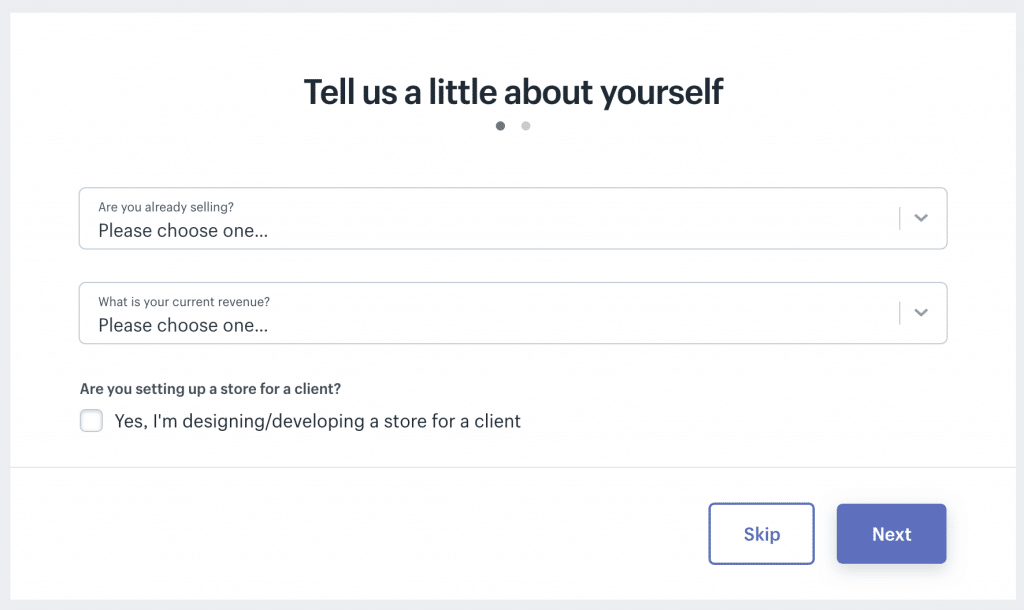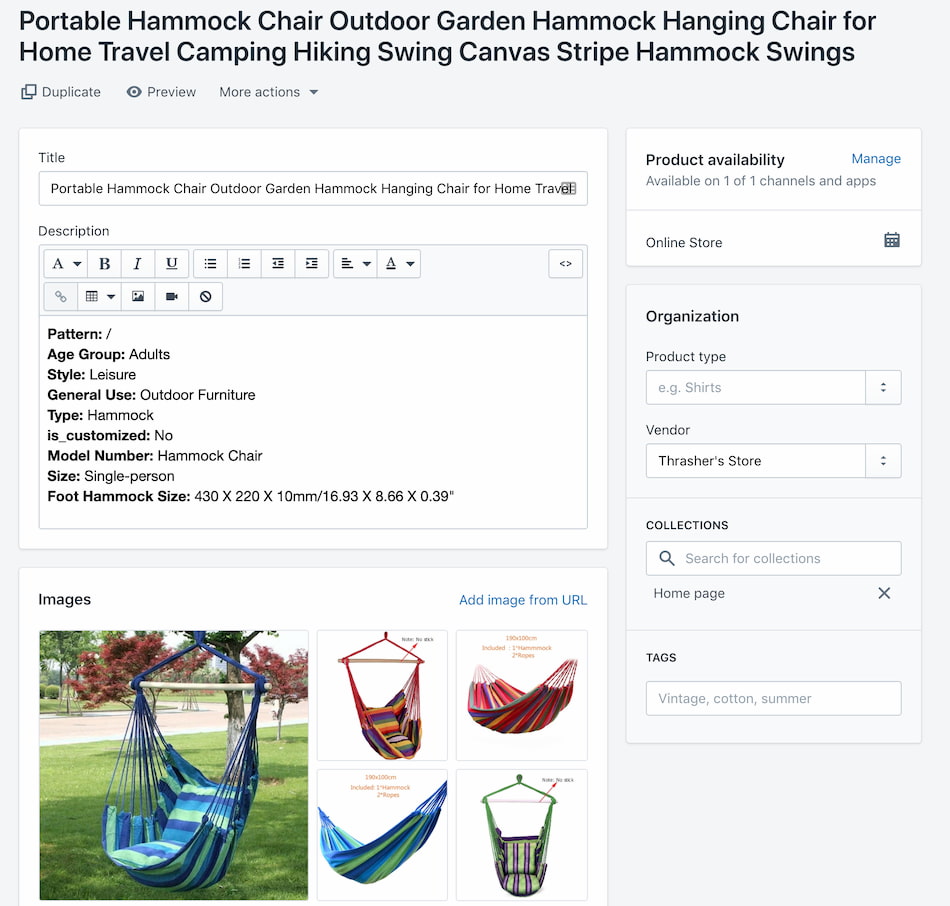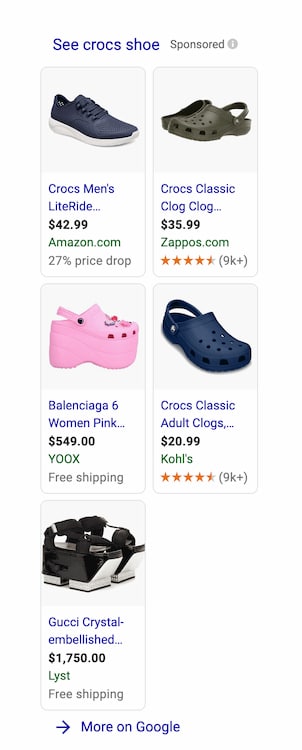How to Make Money on Shopify (Step-by-Step With Examples!)

When you buy something through one of the links on our site, we may earn an affiliate commission.
Learning how to make money on Shopify is a great way for those of us interested in building a thriving online business from scratch to do just that.
Do you want to make thousands a month from online business? One you can work on from anywhere?
Hey, who wouldn't love that? (Especially those of us on a website called Niche Pursuits!)
All of us share the goal of a successful business, but it can be hard to know which direction to go when you're still starting out.
I'm here to help!
Now, I'm sure you've been thinking about building your own online business for a while. So you probably already know about Shopify, an e-commerce platform that gives you the infrastructure you need to make things happen.
But you also know it's not enough just to have a tool for building your online store, payment processing, and shipping?
After all, does owning a lawnmower automatically mean your lawn is freshly manicured?
To have a real business, you need more than an online storefront. You need something to sell!
Can you make money on Shopify? Absolutely! But it takes hard work and smart planning.
In this in-depth post, I want to share how to make money on Shopify. This guide will help you get the gears turning to figure out the right business for you in Shopify!
And of course, if you want to learn more about Shopify, definitely check out our full Shopify review here. You can also give Shopify a try for yourself with the link below.
Try a 14 Day Free Trial with Shopify Right Here
Try Shopify Free for 14 DaysContents
What is Shopify?
If you already know all about Shopify and how it works, just skip to the next section about business ideas! For everyone else, I'll go ahead and explain what Shopify is all about.

Basically, Shopify is an all-in-one e-commerce platform that helps streamline all of the logistical stuff. They provide the merchant solutions for things like payment processing, product listings, and other ecommerce tools.
The type of things that can be intimidating and time-consuming to a small business owner looking to sell online.
Here's just a quick list of what it helps you do:
- Build an e-commerce store (includes prebuilt themes)
- Create product listings
- Optimize store for SEO
- Set up a shopping cart
- Manage credit card transactions
- Automate emails for cart abandonment
- Collect sales tax automatically
- Manage fulfillment
- Offer discount codes, sales, coupons, and gift cards
- Measure results with analytics reports
- Make your store responsive for mobile
You can create your entire store directly through Shopify with its hosted platform, pointing your domain there and even adding a blog through Shopify's full-featured content management system.
Or with the most basic plan, Shopify Lite, you can simply add embeddable products. This works with a Facebook page or existing website built on WordPress, Wix, Weebly, or Squarespace!
The simplest way to put it is this: Shopify helps you sell stuff online.
On the other hand, you need to understand that Shopify is NOT a marketplace with an existing audience like Etsy, eBay, or Amazon.
The same way a brick-and-mortar business needs local marketing to drive foot traffic, your Shopify store is virtually invisible without all of the online marketing techniques we teach here at Niche Pursuits.
I'll talk more about strategies for generating traffic later in this post.
How to Make Money on Shopify: Business Ideas
Now that you have a sense of what Shopify is, the next thing to think about is which business you want to build with it. In order to make money on Shopify your most important decision will be to choose a viable business model.
There's obviously more to it than that, but you've got a HUGE head start if you actually pick a strategy that others have successfully used for their online businesses.
What better way to learn about the Shopify ecosystem than studying the most successful Shopify merchants already on the platform (check out some great Shopify success stories)?
So, here are just a few of the approaches people commonly use to make money on Shopify!
Physical Goods
In my experience, physical goods represent Shopify's sweet spot. It's hard to do all the legwork to create your own ecommerce store for physical goods from scratch.
But fortunately, Shopify lets you just plug in your products and go. It's seriously fast!
Now, you might be wondering: Why bother with Shopify instead of just selling physical products with something like Amazon FBA?
Good question!
Both require a monthly subscription fee if you plan to sell a decent volume of products. And both provide you with an ecommerce solution to hawk your wares.
But here's the thing about Amazon: while it has huge traffic, it also has huge competition.
Amazon also takes away a lot of your control, including everything from how you set up your product listing to your branding.
Worst of all, it's super easy for a buyer on your Amazon product listing to click over to a competitor's product without even thinking about it. Most sellers on Amazon are invisible to buyers, making brand loyalty a concern.
With Shopify, you can build a strong brand on your own store. Plus create an email list and content that draws organic traffic to your website.
All of this control gives you a major leg up!
Of course, like many major brands do, you can always sell your Shopify products on Amazon in addition to your own store, but I'll get to that later!
With all of that said, the two most common ways you can use Shopify to sell physical goods online are dropshipping and print on demand. I'll also touch on flipping retail products, if that's your cup of tea.
Dropshipping
You've no doubt heard about dropshipping plenty of times already in online marketing and ecommerce circles.
The basic business model of dropshipping is just a method of fulfillment for physical products that people have ordered online.
There's nothing inherently magical about dropshipping, except that it lowers the barrier to entry for us mere mortals who don't have our own warehouse space to store inventory.
As a dropshipper, you're actually in the marketing business.
It's your job to sell another manufacturer or brand's products to an audience online, and then the manufacturer will fulfill the order.
It's a symbiotic relationship where you can focus on marketing and sales without thinking about inventory and fulfillment, and the shipper can do the same in reverse.
Your approach to dropshipping on Shopify should be to partner with distributors who are selling high-priced items. As a marketer, you can then use SEO content, a Google Ads campaign or Facebook ad campaign to help serve results to people who are actively searching for the type of product you're selling.
With dropshipping, your primary expenses are fairly minimal: just paid ads and a Shopify subscription is often sufficient.
Eventually, you may hire people to help with product uploads and customer service – but at first, if you're doing the work yourself, that's pretty much it!
Your margins may not be as good with dropshipping compared to managing all of the inventory yourself. And you're dependent on the supplier or manufacturer for your brand's success, but dropshipping is a fairly low-capital way to get into the business of physical products.
Print on Demand
The whole point of print on demand is to eliminate the need for massive upfront costs on inventory for items, and to instead create them only as orders come in. It basically works the same way dropshipping does.
But the kinds of products you sell with print on demand are a little more specific.
If you're ready to try print on demand, you can link up your Shopify store to a print on demand service. Typically a third-party print on demand app like Printful within Shopify.
The simple process goes like this:
- You add products for sale to your store.
- A customer orders the product from your store.
- Your store sends the customer's order to your print on demand service.
- The print on demand service ships the order to your customer.
- Profit.
You can do this for all kinds of "printed" products, too. Either by creating your own products, or adding a custom design or logo to existing products.
Some of the items you can sell on demand include:
One great thing about print on demand is how easy it is to get started. Other companies have spread out the risk by buying these physical products in bulk that you can then customize with your own design.
Even better, it's easy to use Shopify to test out your different ideas.
Your only upfront expense is the time and money invested in creating a design for the print on demand company, so you have very little risk in A/B testing different product options and seeing what's most popular.
And because no one else will have your exact design or brand, you can carve out a niche for yourself in the marketplace!
Print on demand is a common way that merchants on the platform start learning how to make money on Shopify.
Flipping Products
There's inherent value in physical goods, which means there's always the potential for a little thing called retail arbitrage.
Don't worry, it's not as complicated as it sounds.
Arbitrage is just a fancy word for “flipping,” like those annoying people on HGTV who act like they understand house flipping.
But instead of the crazy amount of capital involved in buying and selling an entire house, you can do this on a much smaller scale with everyday items and your very own Shopify store.
Here's the basic premise: You go to a chain retail store like Target, Staples, Walmart, Home Depot, Ross, or Gamestop – or an online source like eBay or Craigslist – to buy products at a lower price than what they might normally sell for online.
It helps to grab items on clearance or sales, and you'll typically buy dozens of the same product once you've determined it can fetch a higher price on your store.
You basically by a $20 product on clearance for $5, and then sell it for the $20. Pocket the profit. Rinse and repeat.
This arbitrage process is commonly done with Amazon FBA or eBay, but it's a perfectly legitimate option for your Shopify store as well (don't miss our guide to eBay vs Shopify here).
And again, it's always possible to list your products from Shopify on Amazon or eBay if you want to (but don't miss our comparison of Shopify vs Amazon here).
While there's nothing wrong with flipping every product you find, I recommend that you pick a handful of categories that your brand will represent, such as baby clothes, electronics, toys, or fishing gear.
Whatever areas you focus on, you'll become intimately familiar with what these things cost over time, so you'll be able to spot deals immediately. And then you can build a brand that people come to associate with those items as well.
Now, flipping is NOT for the faint of heart.
Unlike dropshipping or print on demand, YOU are responsible for pretty much everything: sourcing, inventory management, pricing, and fulfillment.
If you're good at retail arbitrage, you can make a LOT of money, because you have so much more control over the process.
But if you're not, you might end up with two hundred boxes of fidget spinners sitting in your basement that you thought would always be popular (ahem).
The bottom line is, a great deal of time, effort, money, and strategizing needs to go into retail arbitrage. But your Shopify store is a perfect place to build your brand, list these products, and make lots of sales!
Productized Services
Not sure you want to deal with physical products? No worries!
On Shopify, you can also sell all kinds of "productized" services like freelance web design, SEO packages, live events, online classes, and consulting.
A common way to do it is to treat each separate "level" of service as a different SKU. So as a guitar instructor, for example, you might have options for 30 min, 1 hour, and 2 hour lessons that the buyer can select.
Each of these would be sold at different price points and represented as a different "product" in the system.
Productized services make sense in the Shopify model because they're standardized and easy to sell in an online transaction right away.
Both the buyer and seller understand exactly what's being offered.
By contrast, any custom services that would require a quote are still doable, but kind of a weird fit for Shopify. Unless you're selling these services alongside actual products in the same online store, it's pretty easy to just sell custom services using a traditional website.
For example, if you sell graphic design and always need to give a custom quote, you may just want to set up a call to action for buyers to schedule a call.
You don't need Shopify for this. Slap a button on your WordPress website (any visual builder will do) and link it to a scheduling service like Calendly for an automatic process to get these leads scheduled for a call.
If you ARE determined to use Shopify to generate leads, here's one more interesting possibility: Rather than selling a product, you can choose to “sell” a totally free class or live event.
Shopify doesn't require you to charge in order to use its ecommerce functionality, so you can use it for lead generation by charging $0 and advertising a FREE training, webinar, coaching call, etc.
Regardless, you'll want to make sure you disable the shipping for this type of purchase at the product level, because the transaction doesn't involve shipping a physical good.
Digital Products
In this day and age, most people are pretty comfortable making 100% digital purchases.
Using Shopify, you can easily sell digital products. Either your own or somebody else's.
This is great because there's no inventory to worry about or cost of goods sold. With your expenses pretty much fixed, every unit sold is basically 100% profit.
Here are just a few possible digital products to sell:
- Video courses
- EBooks
- Apps
- Licensable assets (stock photos, music, video)
- Digital tools (WordPress templates, spreadsheets, After Effects templates)
- Access to membership sites
- Digital downloads (music, art, wallpapers, ringtones)
The fact is, you have all kind of possibilities here, and you can offer different types of products on the same store. You can even mix and match physical and digital products, as well as services!
And as I mentioned earlier, you don't have to come up with your own products unless you're ready to.
If all you want to do is set up shop selling affiliate products, you can absolutely do that in Shopify.
Most affiliates provide you with some creative like banner ads or descriptions that you can use in your store, whether in Shopify or on your own website.
Setting Up Your Shopify Store
Now that you've had a chance to think about your business model, are you ready to get started for real with your own Shopify store?
If you've never signed up before, don't forget to grab this nice 14-day free trial!
Get Started on Shopify for FREE here!Now, the first thing you do when you sign up is enter your name and the name of your store. For mine, I chose the ultra-clever "Thrasher's Store" (yes, Thrasher is my real last name).
If you need some inspiration, check out our list of 1001 Shopify store name ideas!
Next, you can tell Shopify where you're at in your ecommerce journey.

Once you're all the way in, you're sort of dropped off the deep end. Yes, there's some training, but it's a little overwhelming at first.
To orient you, notice the sidebar on the left side of your screen. This is where you'll manage everything on the back end, including your orders, products, and marketing.

You'll also have sales channels where you can manage what your customers see on the front end.
Okay, so there's a lot to do now that you've started your Shopify store, but what steps should you take?
Well, on the home page, they suggest you add a product, customize your theme, and add your domain.
Here's what I recommend.
Step 1: Establish Your Business
I don't want to beat a dead horse, but you should REALLY think through what your business model is going to be. Especially when you're starting out, you can't do everything at once and expect to do well.
Consider what makes sense for your brand, what you like to do, and what area you're most knowledgeable about. What would you realistically be able to start making sales in pretty quickly?
For a lot of us, that might be a service – and that's okay!
Countless businesses start with services and develop information products or physical products based around that core offering later.
Or maybe you want to take this opportunity to learn something brand-new, such as dropshipping. Do it!
My advice is to pick ONE thing and commit to it for a good 3-6 months before you think about switching. Resist shiny object syndrome. It's not easy, but it's important!
Lastly, once you have a sense of what kind of product or service you're going to sell, you need to finalize your business name.
If you're truly serious about this, I highly recommend you take a few minutes to search the internet for the name to see if you can rank for it, and you should also browse the TESS (Trademark Electronic Search System) to make sure you're safe to use the name in commerce.
Once you have a business model and a name, you're ready to start building an ecommerce store!
Step 2: Customize Your Theme
Got your business name and a strategy in mind? Great, back to Shopify!
Under "SALES CHANNELS," this is where you customize what the customers see on the front end. To start, your only channel is the Online Store that comes with Shopify – and it's pretty bland before you start adding products and customizing the visuals.
How bland? Well...

Can't say I didn't warn you!
Like with the default WordPress theme, the theme you start with in Shopify (fittingly called "Debut") really NEEDS to go – if for no other reason than the fact that thousands of other people probably never bother to change theirs from Debut.
The kind of business model you decided on may impact which theme makes sense for you. Now that you have the business in mind, let's get a better theme for your store!
Right under your Online Store in the sidebar, you'll see a tab for "Themes." Click it and choose either free or paid themes to browse.
If you're willing to pony up some cash, the paid themes give you a lot more features and flexibility and they can be searched for by industry!
For the purposes of this post, I'm not going to spend $180 on a premium Shopify theme, but just know that this one-time expense can dramatically open up your options with your store.
I went with the free theme Brooklyn, which is theoretically intended for an apparel store. Let's see what products I can find!
Step 3: Add Your Products to Shopify Store
Okay, now the real magic happens! You're going to actually put some real products in the store that can be sold.
This isn't too difficult. Just go to the "Products" tab in the sidebar and click "Add Product."

Once you're on the Products page, you can fill out all of the details for your own product and upload your product image.
If you don't have any products to sell yet, you have another option: Next to "Add Product" is a little link called "Find Products."
This takes you to a Shopify blog post full of third-party apps that offer physical products you can sell on your store.
Here are just a few of them:
- Oberlo
- Shapeways
- MXED
- Printful
- Printify
- Creative Hub
These include both free and paid options, and give you a helpful starting point when you don't know what you want to sell.
We can get started with basically any of them. But let's see what Oberlo has to offer.

Once I installed Oberlo, I saw that there are literally millions of wholesale items you can import via AliExpress (a China-based retail service owned by Alibaba) and sell on your store.
I chose a hammock and clicked import to bring it to my store. Then, I selected the option to edit the product...and voila!

It filled in a lot of the details for me, but I would definitely customize the product title, images, and so on.
You can also set up collections (either manual or automatic) that group together certain types of products in your store.
A manual collection is one that you curate yourself on an individual basis, while automatic collections are based on conditions that products meet.
Now, this was just a demonstration – I would recommend being a little more strategic than that in picking your products. But there's nothing wrong with adding different apps to Shopify and exploring all of the items you can sell!
Getting Traffic to Your Shopify Store
Great! We have a theme and some products ready to go.
Now, let's get some sales!
As with any online business, there are all kinds of ways to get traffic to your Shopify store.
Of course, Shopify is a little different than a content website, so I'm going to help you focus on the best choices for an ecommerce store.
I'll start off by saying you should ALWAYS look into PPC ads for marketing your Shopify store.
Why?
Well, the problem with straight SEO is that it usually takes months to rank, and even then, you have to be lucky enough to find a bunch of low-competition buyer-intent keywords that work for what you're selling.
Shopify does have a blog function included, and I definitely recommend you use it. Just don't RELY on your original blog content to supply all of your incoming traffic.
Lastly, keep in mind that every vertical is different, so you may have to experiment to see which marketing approach gets you the best results.
PPC Ads

If you try PPC ads, you want to make sure you're putting the odds on your side that your ad is the right fit for your buyer and your products.
Text ads can be effective, but consider starting with Google Shopping Ads. These will display actual images of your product. For physical products, images ads can be a lot stronger.
You also need to think about the landing page you're going to use for your PPC ads.
Not doing this is a common mistake. If someone searches for a specific type of shoe like crocs and clicks your ad, don't just drop them on your generic store page!
Social Media Ads
Social media ads can be tricky when you're trying to get people to buy something right away. Unlike with Google search, people on social media generally aren't on there looking to make a purchase
So you need to keep this in mind as you create your ads for Facebook, Instagram, Pinterest, etc.
Done right, social ads can work very well!
You just need to think like your buyer, and use demographic and psychographic data to pinpoint who your target audience really is and what they want.
Alternatively, you might think about social media ads as a great way to build your email list.
These users may not be ready to make a purchase yet, but could be perfectly willing to join your list in exchange for some kind of freebie.
That's one of the best things about having your own ecommerce store. You have the ability to build a following and a long-term relationship with your customers.
Influencer Marketing
I'm not as experienced with influencer marketing, but it's definitely worth looking into. Especially if your product has a "cool factor." After all, there's a reason why people are scrambling to become "Insta famous" – you can cash in!
The reality is, micro-influencers get high engagement from their followers, especially on sites like Instagram and YouTube.
By getting free or paid mentions from influencers in your space, you can get a flood of new traffic to your site. And these are people motivated to buy, because you're essentially getting a word-of-mouth recommendation.
Like with social ads, the value of influencer marketing goes beyond immediate sales.
This strategy can help you reach new audiences and build awareness of your brand. It also helps you build connections with people in your space, which opens up future opportunities!
Content Marketing
With blog content on your Shopify site, you can attract buyers organically through Google search.
There are many ways to do this!
- Create videos on YouTube.
- Start a podcast that mentions your store.
- You can do guest posts on industry blogs.
- You can also manage social media accounts or pages centered around a topic related to your store and link to it there.
However you go about it, creating original and valuable content is a time-tested way to get traffic to your website.
But the key is to produce content for people at EVERY stage in the buyer's journey.
While it's tempting to just write content about what you sell (product or service), most people aren't looking for that. But they ARE looking for something that explains what their problem is and gives them solutions.
It's a little harder if your brand is more artistic and less about providing solutions to problems, but even art is essentially a solution to a problem.
People look to art for entertainment, inspiration, status, comfort, etc.
Get to know what your potential audience likes and where they are online, then post to channels where you can show off what you do. This could include Reddit, Pinterest, Instagram, Imgur, DeviantArt...the list goes on!
If you want to figure out how to make money on Shopify, sometimes you have to get creative.
Just know that a good content marketing campaign can be a major part of how to make money on Shopify.
Shopify Apps and Third-Party Integrations
One of the most useful features of Shopify is that it connects with other platforms and third-party apps to extend its functionality.
Similar to WordPress plugins, these are sometimes free and sometimes paid, but they can dramatically improve the way you sell.
In the sidebar, you'll see a tab for Apps. From there, you can visit the Shopify App Store, which will extend the functionality of your store with apps for everything from dropshipping to live chat to marketing automation.

Like with themes, you can easily find free or paid versions of almost any function you're looking for.
Here are some of the main categories:
- Inventory management
- Customer support
- SEO
- In-house fulfillment
- Email marketing
You can even work with a developer to make a private app for your Shopify, if you have the resources to make that happen!
As far as third-party integrations, if you click the little plus button next to "SALES CHANNELS" in the sidebar, you can easily add new channels with other platforms. Including Facebook Shop, Instagram, Amazon, eBay, and the universal "Buy Button" that applies to any website or blog you manage.
Of course, any of these options may require additional fees associated with selling on another platform.
Shopify Plans and Pricing
Obviously, you can try Shopify for free to get a handle on it, but eventually, you'll want to settle on the right plan for your business. The good news is, Shopify plans are actually pretty straightforward!
You can see everything each Shopify plan offers and figure out which one is right for your needs.

While their main plans are listed prominently, you technically have five options:
- Shopify Lite: $9/mo
- Basic Shopify: $29/mo
- Shopify: $79/mo
- Advanced Shopify: $299/mo
- Shopify Plus: $2,000+/mo
You can try any of these plans for free for 14 days!
Try Shopify FREE for 14 DaysShopify Lite
Shopify Lite isn't heavily emphasized on the pricing page, partly because it doesn't really give you the full ecommerce store I've been talking about throughout this post.
Instead, the Lite version just lets you sell on your website, social, or offline for an affordable $9 a month using an embeddable buy button.
This may be the perfect fit for you if you've already built your own blog or Facebook page!
Basic Shopify
At $29 a month, Basic Shopify is a solid starting point for your own fully-hosted ecommerce store. If you have products or services being sold at a decent price point, you'll make this subscription fee back quickly.
Basic Shopify comes with most of the features we've talked about.
So it might be easier to point out what Basic Shopify doesn't have: gift cards, professional reports, or the biggest discounts on credit card rates and shipping fees.
It also gives you just two staff accounts, compared to 5 or 15 with the more advanced plans.
Shopify
The regular Shopify plan costs $79 a month, and it adds a few perks like gift cards, 5 staff accounts, professional reports, a better shipping discount, advanced reporting, and more features for Point of Sale.
It also gives you a significant drop in fees for non-Shopify Payments providers.
Advanced Shopify
The most expensive standard plan, Advanced Shopify costs $299 a month.
This one makes sense if you're doing a LOT of volume, because it gives you substantial discounts on all shipping and payment processing fees for each unit sold.
It also comes with advanced report building so you can customize your reports and track what's most important to you. This plan also includes real-time carrier shipping.
Shopify Plus
This is Shopify's scalable enterprise-level solution, and it requires a custom quote, but expect to pay multiple thousands of dollars per month for Shopify Plus. The minimum starting price I could find advertised was $2,000 a month.
Shopify Plus includes a dedicated support team and 24/7 support.
This is for large companies, so most of us won't need to look at it, but I wanted to make sure you knew it was an option, just in case!
How to Make Money on Shopify Wrap-Up
There's SO much that goes into building a successful online business. I couldn't possibly cover everything in a single post!
However, I hope this gave you a really good starting point for creating an online business with the Shopify platform. There's a reason it's a popular ecommerce platform. In fact one of the most popular out there (although there are Shopify alternatives).
By picking a business model, choosing your products, defining your brand, customizing your theme, and getting traffic to your store, you have the foundation of a thriving online business.
Lastly, I want to remind you that this is all an evolving process. Paid ads that are working for you today may not work tomorrow. Algorithms will change. New marketing opportunities will open up.
Products will ebb and flow in popularity.
As long as you keep an open mind and test your ideas, you should go far!
Ready to get started with Shopify? Grab your FREE 14-day trial right now!
Try Shopify FREE for 14 DaysWant to learn step-by-step how I built my Niche Site Empire up to a full-time income?
Yes! I Love to Learn
Learn How I Built My Niche Site Empire to a Full-time Income
- How to Pick the Right Keywords at the START, and avoid the losers
- How to Scale and Outsource 90% of the Work, Allowing Your Empire to GROW Without You
- How to Build a Site That Gets REAL TRAFFIC FROM GOOGLE (every. single. day.)
- Subscribe to the Niche Pursuits Newsletter delivered with value 3X per week
My top recommendations
















